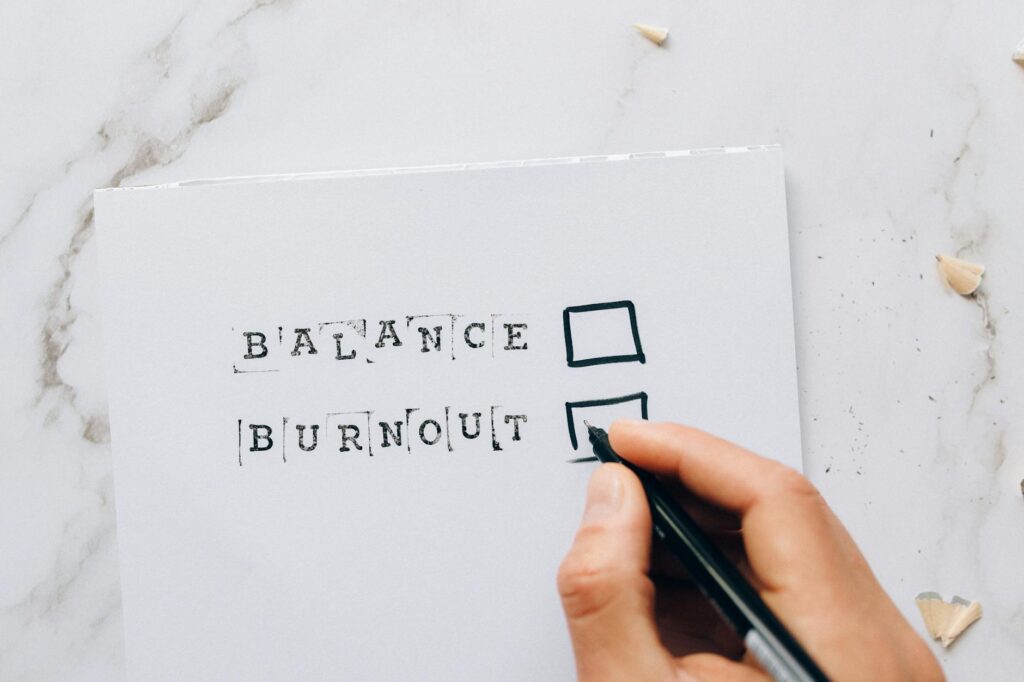What is burnout prevention tips?

What is burnout prevention tips?
In today’s fast-paced world, burnout has become an all-too-common experience for many. It’s not just an occasional feeling of fatigue; it’s a state of emotional, physical, and mental exhaustion that can significantly impact your productivity and overall well-being. Understanding burnout prevention is vital, not only for maintaining your health but also for enhancing your work-life balance and personal development. Here, I’ll share insights on recognizing burnout and practical tips to prevent it.
Understanding Burnout
Burnout isn’t merely stress at work; it’s a chronic state that can lead to severe health problems. According to the Mayo Clinic, burnout can stem from various factors, including excessive workload, lack of control, or even unrealistic expectations.
Symptoms of Burnout
Identifying the symptoms of burnout is crucial. Common symptoms include:
- Fatigue: A constant feeling of tiredness that doesn’t improve with rest.
- Irritability: Increased frustration or anger over trivial issues.
- Lack of Motivation: A sense of disinterest in your work or personal life.
- Physical Symptoms: These can include headaches, stomach issues, or unexplained aches.
Recognizing these signs early can help in taking action before the situation worsens.
Causes of Burnout
Burnout doesn’t happen overnight. Several factors contribute to its development:
- Work Environment: A toxic workplace culture or lack of support can increase stress levels.
- Workload: An overwhelming amount of tasks without adequate resources can lead to exhaustion.
- Personal Expectations: High personal standards can create unnecessary pressure.
Understanding these causes can help in mitigating their effects and developing effective burnout prevention tips.
Effective Burnout Prevention Tips
Implementing practical strategies can significantly reduce the risk of burnout. Here are some effective tips to consider:
Time Management Strategies
Time management is key in preventing burnout. Start by prioritizing your tasks and setting realistic goals. Use techniques like:
- The Eisenhower Matrix: Identify urgent and important tasks to focus on what truly matters.
- Time blocking: Schedule specific blocks for work and breaks to maintain a balanced pace.
These strategies can help you feel more in control of your time and workload.
Self-Care Practices
Self-care isn’t a luxury; it’s a necessity. Incorporate these practices into your daily routine:
- Regular Exercise: Physical activity can significantly reduce stress and boost your mood.
- Healthy Eating: A balanced diet fuels your body and mind, improving resilience against stress.
- Adequate Sleep: Prioritize sleep to help your body recover and recharge.
By nurturing your body, you’re better equipped to handle daily challenges.
Setting Boundaries
Learning to say no can be a powerful tool in preventing burnout. Establishing boundaries helps maintain a healthy work-life balance. Consider these approaches:
- Limit Overtime: Set specific work hours and stick to them.
- Disconnect After Hours: Avoid checking emails or work messages during personal time.
Creating these boundaries allows you to recharge and focus on personal time.
Mindfulness and Stress Reduction
Practicing mindfulness can be a game changer in managing stress. Techniques such as:
- Meditation: Spend a few minutes daily to calm your mind and refocus your thoughts.
- Deep Breathing Exercises: Simple breathing techniques can alleviate immediate stress.
- Mindfulness Practices: Engage in activities that promote awareness and presence, such as yoga.
These techniques can enhance your ability to cope with stress effectively.

Photo by Nataliya Vaitkevich
Creating a Supportive Environment
A supportive environment at work and home is essential for burnout prevention. Here’s how you can cultivate such an atmosphere:
Seeking Support from Colleagues and Friends
Building a network of support can be incredibly beneficial. Share your experiences with trusted colleagues or friends. This can help:
- Reduce Isolation: Connecting with others makes challenges feel less daunting.
- Gain Perspective: Discussing your feelings can provide new insights and coping strategies.
Professional Help When Needed
If you find that burnout symptoms persist despite your best efforts, don’t hesitate to seek professional help. Therapists and counselors can provide valuable tools and support tailored to your needs. As highlighted by Choosing Therapy, professional guidance can help you navigate through deeper issues contributing to burnout.
Conclusion and Moving Forward
Burnout is a serious issue that can affect anyone, but with awareness and proactive measures, it can be prevented. By implementing these burnout prevention tips—like prioritizing time management, engaging in self-care, and fostering supportive relationships—you can protect your well-being and enhance your productivity. Remember, it’s about making small, sustainable changes that lead to a healthier, happier life. Start today; your future self will thank you!
